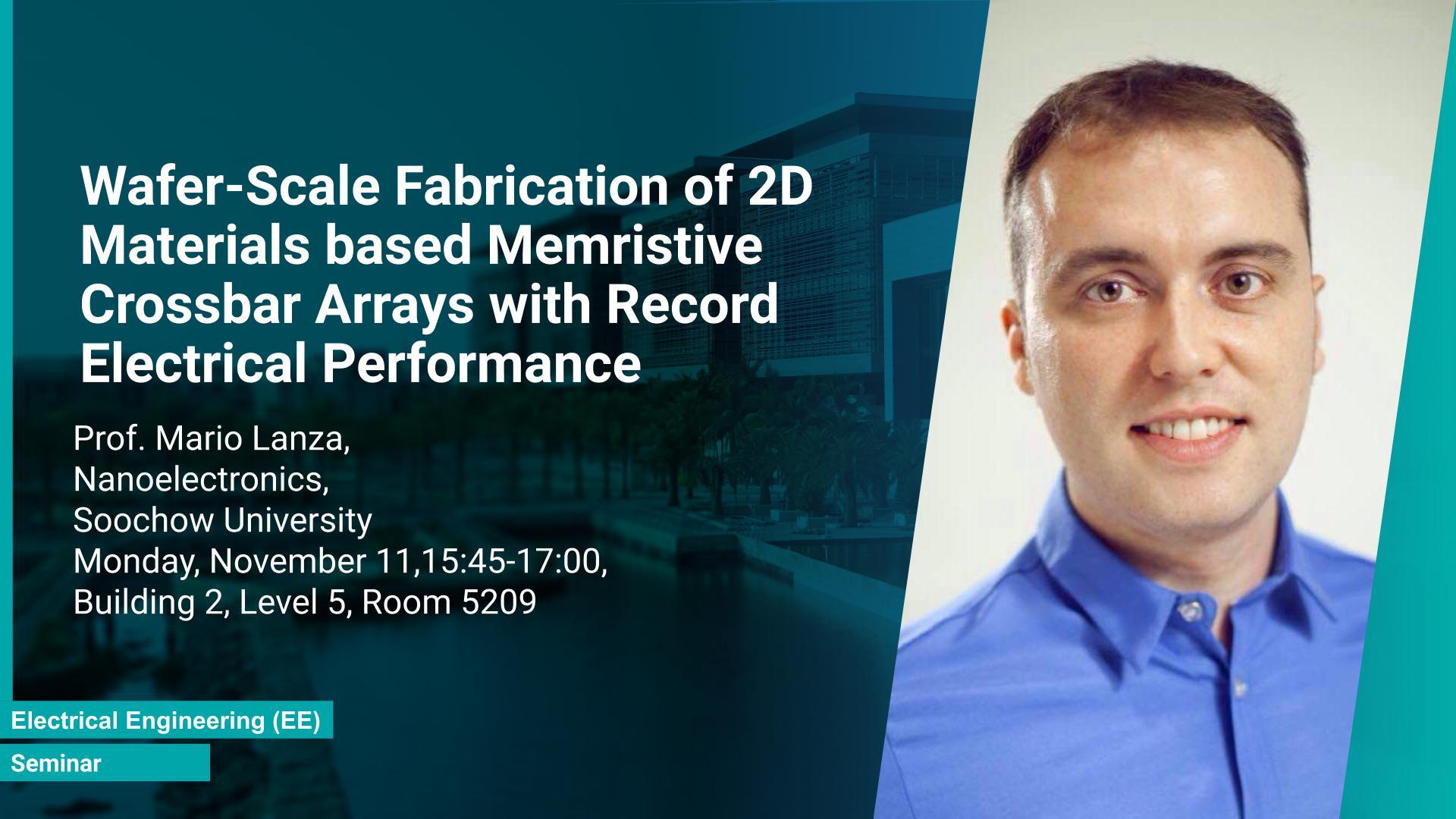Abstract
During the last decade, memristors have attracted enormous interest due to their excellent capability to store digital information, and they are being considered to be a key element to build future artificial neural networks for bio-inspired neuromorphic computing systems. Recent works have shown that memristors made of layered two-dimensional (2D) materials can exhibit performances that traditional memristors (made of transition metal oxides) do not show, such as excellent transparency and flexibility, high-temperature stability, and unique controllability of the conductance potentiation, depression and relaxation. However, all studies on 2D materials based memristors focused on single devices, and system level performances like yield and device-to-device variability have never been analyzed in depth. Furthermore, several basic properties of 2D materials based memristors (such as switching time, write energy, I-V non-linearity, and scalability) have never been investigated. In this seminar, I will present the first wafer-scale statistical analysis of memristive crossbar arrays made of 2D layered materials. By using chemical vapor deposited multilayer hexagonal boron nitride (h-BN) sheets, we have fabricated metal/h-BN/metal memristive crossbar arrays that exhibit high yield ~98%, and low device-to-device variability. The devices showed record electrical performance, including stable operation at ultra-low currents down to 110 fA in low resistive state, ON/OFF current ratios up to 1011, record non-linearity of <0.09 mV/decade, and unprecedented low energy consumption down to 4.4 zJ/transition. Furthermore, the miniaturization of metal/h-BN/metal memristors has been demonstrated by using nanodot (Ø < 50 nm) electrodes. These findings may accelerate the use of 2D materials for building wafer-scale and high-density electronic memories and artificial neural networks.
Brief Biography
Mario Lanza is a Full Professor at Soochow University (world rank: 11th according to Shanghai Ranking, 19th according to US News, and 27th according to Nature Index). Dr. Lanza got his PhD in Electronic Engineering with honors in 2010 at Universitat Autonoma de Barcelona. During the PhD he was a visiting scholar at The University of Manchester (UK) and Infineon Technologies (Germany). In 2010-2011 he was NSFC postdoc at Peking University, and in 2012-2013 he was Marie Curie postdoc at Stanford University. Prof. Lanza has published over 100 research papers, including Science, Nature Electronics and IEDM, edited a book for Wiley-VCH, and registered four patents (one of them granted with 5.6 Million CNY). Prof. Lanza is member of the advisory board of several journals, including Advanced Electronic Materials, Scientific Reports, Nanotechnology, Nano Futures and Crystal Research and Technology, as well as guest editor of a special issue in Advanced Functional Materials. He is an active member of the technical committee of several world-class international conferences, including IEEE-IEDM, IEEE-IRPS, IEEE-IPFA and APS. Prof. Lanza has received the 2017 Young Investigator Award from Microelectronic Engineering (Elsevier), and the 2015 Young 1000 Talent award (among others), and in 2019 he was appointed as Distinguished Lecturer of the Electron Devices Society (IEEE-EDS). Since 2013, Prof. Lanza leads a research group formed by 15-20 PhD students and postdocs at Soochow University, and they investigate how to improve electronic devices using 2D materials, with special emphasis on two-dimensional (layered) dielectrics and memristors for non-volatile digital information storage and artificial intelligence computing systems
